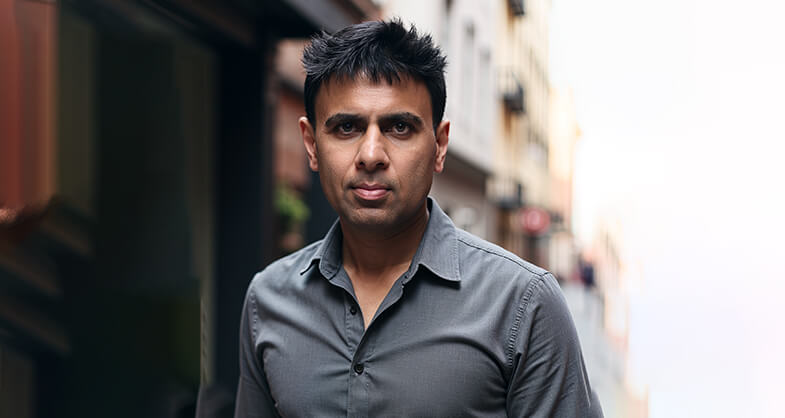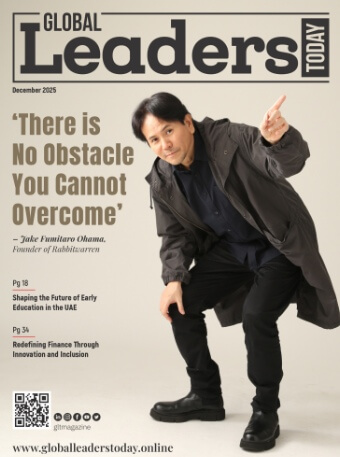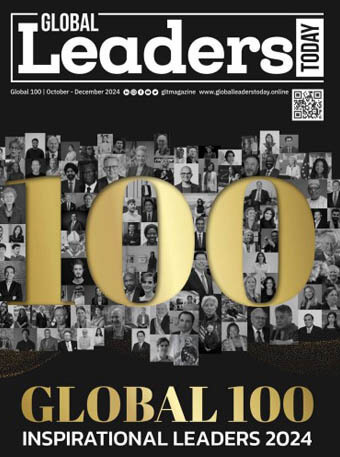A serial entrepreneur, investor, and advisor whose career has been defined by building and scaling technology ventures across the US, Europe, and Asia, Shirish Nimgaonkar has always been at the forefront of helping businesses harness the power of intelligent automation to drive efficiency and growth.
As the Founder and CEO of eBlissAI, an AI-native predictive automation SaaS company, Shirish comes with a strong track record of leading multiple VC- and PE-backed companies to significant growth and successful exits. His earlier role as a founding Managing Director at a global investment bank saw him advising high-growth technology firms around the world, while his position as an Entrepreneur in Residence at Harvard Business School reflects his commitment to fostering the next generation of innovators.
An alumnus of IIT Bombay (ITC Scholar), Stanford University, and Harvard Business School, Shirish combines technical expertise with sharp business acumen. Beyond the boardroom, he is a trained classical musician and leads a music band that channels creative expression toward social good.
In this exclusive interview for Global Leaders Today, Shirish Nimgaonkar opens up about his entrepreneurial journey, the future of AI in business, and the values that shape his leadership philosophy.
Q. Tell us about your professional path and the milestones that shaped your success.
My professional path has been a series of audacious pivots, guided by an unrelenting drive to learn, experiment, and create lasting impact. It has unfolded in four distinct phases. The first phase was about mastering the mechanics of business at speed. At Intel, as an early product management leader for the 64-bit platform, I drove software and revenue scalability while orchestrating global manufacturing transfers. At Patni Systems (later acquired by iGate / Capgemini), I ran the CEO’s office, fueling 70%+ annual growth across new business lines. Combined with leadership roles in multiple VC-backed startups with successful exits, this phase armed me with a deep playbook in product management, operations, partnerships, and business development.
The second phase sharpened my edge in strategy and building CXO relationships. As Managing Director at Alantra, I built the South Asia and Technology groups, advising 30+ high-growth companies on M&A, capital raising, and transformation at critical inflection points.
The third phase defines my present—founding and scaling game-changing ventures. At Nanoheal, I grew ARR 5x with Fortune 2000 clients. With eBlissAI, I’m targeting $325B in wasted enterprise IT spend with an AI-native platform that predicts, heals, and personalizes at scale.
The fourth phase is now emerging: multiplying impact—mentoring, investing, and shaping ecosystems to fuel the next wave of transformation and create impact at scale.
Q. What core leadership principles have guided you across your journey from investment banking to leading high-growth tech ventures?
Several core principles have consistently shaped my journey, tested across investment banking, high-growth startups, and now AI-driven ventures.
The first is Vision. It’s essential to focus on setting a bold, clear direction that inspires teams to rally around purpose and push boundaries, else there is a grave risk of just managing status quo. The second is Accountability. Governance is not bureaucracy—it’s the backbone of ownership. By embedding structured feedback, recognition, and learning, organizations enforce accountability that translates into results. The third is Execution. Ideas without action are hallucinations. It’s critical for leaders to run short, quick experiments, be decisive, and learn from failures. This iterative approach builds confidence and momentum, converting strategy into tangible outcomes. The fourth is Empowerment. Diverse teams excel when trusted to act. A leader’s role is to empower, influence, and then step aside, allowing them to deliver at their highest potential. The fifth is Authenticity. Leadership is not theater. By leading with authenticity and purpose, leaders ensure that impact outweighs ego. Finally, the sixth is Respect and Trust. These are not soft skills—they are hard requirements. They form the foundation upon which vision, systems, and execution endure. Together, these principles fuse clarity, decisiveness, and empowerment—the engine behind sustained transformation.

Q. What gap in the market or enterprise IT landscape led to the foundation of eBliss?
Enterprise IT is at a breaking point. Management of computing devices is undergoing a seismic shift, yet the operating model is hopelessly outdated. CIOs and CTOs, now elevated to the CEO’s inner circle, are under crushing pressure to deliver AI-led transformations that show results fast. But the reality is damning: 78% of companies run AI projects, yet only 1% of enterprise-wide transformations succeed. At the same time, the complexity has exploded—30 billion devices by 2030 generating 80 zetabytes of data. Instead of adapting, enterprises are stuck with a model that is slow, reactive, generic, and vulnerable. Rule-based heuristic fixes and human intervention dominate, making it impossible to address root causes or predict failures. The result is $55B in operating costs and $275B in lost productivity every year. Enterprises don’t need more monitoring dashboards. They need intelligent autonomy that predicts, heals, and personalizes at scale. That has led to foundation of eBliss—to end firefighting, eliminate waste, and finally deliver the transformative outcomes enterprises have been promised but never received. Those who do not adapt to the new demands in end user computing and the requirements for successful digital transformations will perish.
Q. eBliss is being described as a transformative AI-driven SaaS platform for endpoint management. What inspired the creation of eBliss, and how does it stand apart from traditional monitoring solutions?
The inspiration for eBliss came from a glaring market gap for endpoint management. Existing tools monitor symptoms but fail to understand root causes. They generate alerts after issues occur, forcing IT teams into endless firefighting. Worse, their automations are static—frozen in time, unable to adapt as problems evolve. The result is reactive IT that never truly fixes the underlying issues. eBliss is designed to change the game. It is AI-native, not AI-enabled, architected to deliver dynamic automation, continuous prediction, and deep personalization. Our platform doesn’t just flag anomalies—it diagnoses, resolves, and anticipates future failures, adapting in real time to the changing nature of devices and user needs.
Equally critical is the team behind it. eBliss is led by a world-class management team with deep domain expertise in endpoint management, strong pedigree from Harvard, Stanford and IIT, a proven track record of entrepreneurial success – having scaled and exited multiple companies, and unmatched founder–market fit. Having sold endpoint solutions into dozens of Fortune 2000 companies, we understand the pain—and how to eliminate it. That’s why eBliss isn’t an incremental improvement. It’s a revolution in endpoint management – intelligent, adaptive, and built to deliver lasting transformation.
Q. Many platforms claim automation, but eBliss emphasizes autonomous self-healing and personalization. Could you explain how these features redefine enterprise IT management?
Most platforms brag about automation, but the truth is that their automations are static. They don’t evolve with the changing nature of issues, and at scale they collapse—delivering a low effective percentage of resolutions. That’s why so many enterprises still drown in service tickets, high human intervention and highly reactive responses despite automating workflows. eBliss fixes that problem by moving from automation to true autonomy. Our self-healing engine continuously monitors, diagnoses root causes, prescribes and executes on precise fixes, and predicts future breakdowns while providing preemptive actions to prevent them from happening. It adapts in real time as problems shift, ensuring solutions remain relevant and effective at scale. The other breakthrough is personalization. Enterprises have lived with one-size-fits-all fixes that frustrate employees and waste resources. eBliss rewrites that playbook by tailoring solutions and experiences to personas and usage patterns. A developer, a sales rep, and a CFO all get optimizations tuned to their needs. By fusing adaptive self-healing with prediction and personalization, eBliss transforms IT end point management from a reactive help desk into an intelligent, proactive partner. Downtime shrinks, productivity soars, and IT shifts from cost center to growth enabler. That’s not just automation—it’s autonomy at scale.
Q. How does eBliss leverage AI and predictive analytics to proactively detect and resolve issues before they impact end-users?
At its core, eBliss is built for foresight, not hindsight. Legacy tools react to symptoms; eBliss identifies and eliminates root causes. If a software application fails to launch, we don’t simply reboot—we trace the exact fault among 25+ potential causes, apply the precise fix, and confirm resolution. This power comes from our self-learning AI engine layered with agentic AI that includes advanced reasoning. It ingests data from multiple sources including endpoints, IT tickets, and user behaviors, learning continuously and adapting as device conditions change. Unlike static automations, our system evolves—staying relevant and effective at scale. Equally important, eBliss makes this intelligence actionable. Enterprises leaders gain a real-time view of how employees are experiencing technology and how issues are being resolved, alongside predictive foresight into hardware, software, or license risks before they escalate. It’s visibility into today’s pain points and tomorrow’s vulnerabilities – tied directly to outcomes. The result is what I call “Invisible IT” or “Autonomous End Point Management” – problems resolved before users even notice, productivity that flows without disruption, and enterprises liberated from firefighting to focus on strategy. That’s the power of predictive autonomy.

Q. Enterprise IT leaders often face the challenge of balancing cost reduction with performance improvement. How does eBliss deliver measurable ROI to its partners?
CIOs have long been trapped in a false choice: cut costs or improve performance. eBliss obliterates that compromise. By autonomously resolving issues and personalizing outcomes, eBliss slashes operating costs by 40% to 70% and cuts productivity loss by 45% to 75%. Service tickets drop by over 50%, compliance times decrease by over 70%, asset life extends and software costs shrink. The result is a 15x– 45x ROI—which is 10X higher than competitors. But ROI is more than numbers. eBliss cuts cost, increases productivity, and enhances user experiences—all by automating, predicting, and personalizing at scale. Static tools can’t keep up with the dynamic nature of enterprise issues. Our autonomy adapts in real time, ensuring relevance, resilience, and impact. This is the transformation resulting in a complete rewriting of economics. IT and end point management stops being a cost sink and becomes a profit lever. With eBliss, leaders don’t just get savings – they unlock performance, satisfaction, and strategic growth. That’s the transformation through eBliss: not incremental improvement, but measurable impact that pays for itself many times over. That’s the revolution.
Q. Today, you’re both an Entrepreneur in Residence at Harvard Business School and an advisor to startups. How do these roles reflect your evolution as a leader and mentor?
These roles are a natural consequence of my evolution and my desire to create lasting impact. At Harvard, I challenge founders to embrace the same principles that have guided my journey. Vision – set a bold direction that inspires action. Execution – run short, quick experiments, be decisive, and learn fast from failure. Accountability – use governance and feedback loops to turn ownership into results. Teaching isn’t about theory; it’s about distilling principles into actionable frameworks founders can deploy in the real world to create impact. As a coach and an advisor, I double down on authenticity, empowerment, respect, and trust. I’m ruthlessly honest: if a startup doesn’t solve a burning problem, no funding will save it. Founders don’t need just cheerleaders – they need clarity, tough feedback, and the confidence to act. My role is to sharpen strategy, scale execution, and empower teams to deliver measurable outcomes. Ironically, these roles sharpen me as much as I guide others. Every conversation tests my assumptions, challenges my frameworks, and strengthens relationships with bright and hungry founders determined to change the world. That’s the provocation: For me, true leadership is not about control—it’s about multiplying impact by creating leaders who can push boundaries further than you ever could.
Q. What’s the next chapter in your professional journey—where do you see your biggest impact being made in the coming years?
The next chapter is the full expression of Phase 4 – multiplying impact. The best way to predict the future is to invent it. The impossible is often the untried. My career has been fueled by an unrelenting drive to learn, experiment, and create lasting impact, grounded in the leadership principles of vision, execution, accountability, empowerment, authenticity, and trust. Now, my mission is to scale those principles far beyond enterprises – into ecosystems, communities, and causes. At eBliss, we are proving that enterprises can simultaneously cut costs, increase productivity, and elevate user experiences through autonomous AI. But the impact needs to be bigger than business. As founder and lead singer of a band for social good, I use music as a force for change. As a board member of TiE, one of the world’s largest organizations promoting entrepreneurship, as an EIR at Harvard and as an investor, I mentor and back the next generation of builders. As a coach and nonprofit board member, I channel the same principles into advancing child education and women’s empowerment in developing countries. For me, leadership isn’t about the company you build – it’s about the impact you leave. For if we plant a tree, someone else will live in its shade many years later.








